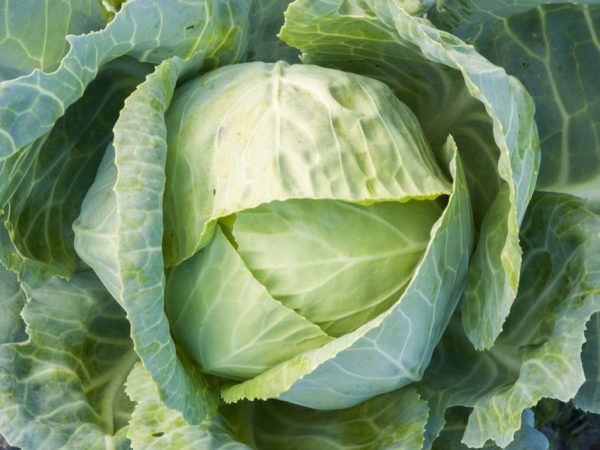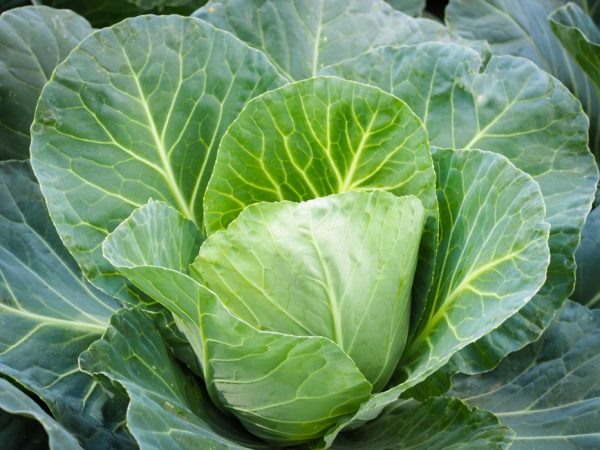Characteristics of cabbage variety Kazachok
White cabbage Kazachok belongs to the early varieties. Farmers loved this species for its simplicity and high yield. The fruits have excellent taste. The culture adapts well to different climatic conditions.

Characteristics of cabbage variety Kazachok
Characteristics of the variety
According to the description, the full ripening of Kazachok cabbage occurs 95-110 days after the emergence of mass shoots. If the time report is from the disembarkation of seedlings to a permanent place, then on the 45-55 day. The timing depends on the region in which the variety is cultivated. There is a possibility of mechanized processing. The crop can be harvested in a short time, since the fruits ripen together. In good weather conditions, this happens in early July. From 1 sq. m receive from 8 to 10 kg of cabbage. The variety is frost-resistant: it can withstand temperatures down to -5˚С.
Description of the head
The rosette of leaves is half-raised. Their number ranges from 16 to 21 pieces. The dimensions of the head are 55.4-67.4 cm in diameter, 21.2-28.0 cm in height. They are short petiolate, sessile, and round in shape. The color is dark green with a characteristic blue tint and a waxy coating. The leaf plate is large-walled, the edge is slightly wavy, the nerve is weak, of medium density. The upper leaves are smooth, without anthocyanin bloom.
The head of cabbage is round, dense. Weight is 0.8-1.2 kg. Height - 15-17 cm. The color of the vegetable is green, on the cut it is white with a yellow tint. The outer stump is 8-10 cm long, the inner one is 6 cm. Cabbage Kazachok F1 is juicy and sweet even when not ripe. The fruits do not crack.
They have the following chemical composition (per 100 g):
- 7.2% dry matter;
- 4.2% total sugar;
- 42.9 mg of ascorbic acid;
- 0.8-1.3% proteins.
The vegetable is resistant to decay and does not lose its taste during storage. It also has an excellent presentation, lends itself to transportation, so you can profitably sell the fruits on the market. Early varieties are consumed exclusively fresh, since they are unsuitable for pickling and salting.
Care
Cabbage Kazachok is characterized by seedling cultivation. To achieve a high yield, you must first organize optimal conditions for seedlings, and then for adult plants.
Seedling
The sprouts need to be kept at an appropriate temperature. After the emergence of seedlings, they are thinned out. Then, for a week, the temperature is maintained at 6-7 ° C, otherwise the seedlings will be very stretched and weak. After that, they adhere to the indicators of 15 ° C during the day and 12 ° C at night.
For culture, it's worth organizing good lighting. To increase it, the seedlings are picked in the phase of 2 true leaves. This procedure helps to strengthen the root system. In April, when the daylight hours are short, the seedlings are provided with additional lighting using lamps.
Watering is carried out as the topsoil dries up. Cossack F1 does not accept excessive moisture. The water temperature for irrigation should be more than 18-20 ° C. The implementation of these recommendations prevents the development of a black leg.
Mature plants

Take good care of your plants
Culture loves timely moisture and warmth.
Cabbage watering rules:
- During the formation of the heads, when the vegetable is in the phase of active growth, an abundant amount of water is added every 2-3 days.
- After fruit setting, watering is reduced.
- A month before harvesting, the soil is moistened once every 7-10 days, and 2 weeks before the procedure is stopped altogether.
Watered in the evening, then the moisture does not evaporate quickly. They take warm water for this. Its amount increases significantly in hot weather, since plants cannot tolerate high temperatures. This is a significant disadvantage of the early Kazachok cabbage: in the heat, it slows down growth. A head of cabbage may not start at all, so you should not grow a crop in the southern regions.
After each watering, the soil is loosened. This provides oxygen access to the root system, which determines its health and power. Also, every 2 weeks, the plants are hilled. The procedure promotes the development of the lateral roots. White cabbage receives additional nutrition.
Plants can be mulched with peat, humus. It is worth regularly removing weeds, which take on a lot of nutrients. They also create favorable conditions for the development of pathogens and shade plantings.
To achieve high yields, cabbage is fertilized. Top dressing is applied in 3 stages:
- 2 weeks after planting the seedlings in a permanent place, use the mullein infusion. To prepare it, 10 liters of water are taken for 1 kg of substance.
- 2 weeks after the first feeding, fertilize with the same agent.
- Urea is used during heading. To do this, add 10 g of the drug to 10 liters of water.
Diseases and pests
Diseases
Cossack F1 has a high immunity to blackleg and mucous bacteriosis, as well as relative resistance to vascular bacteriosis and keel.
According to the description, the following diseases often affect the culture:
- downy mildew;
- gray and white rot;
- fusarium wilting.
For their prevention, plants are treated with fungicides and insecticides. Spraying is done every 10-12 days. You can use drugs such as "Prestige", "Impact", "Zoltan", "Commander Maxi". For this purpose, an iodine solution is used (40 drops of a substance per 10 liters of water). 0.5 l of liquid is poured under each plant. Such a tool also acts as a top dressing.
In the fight against diseases, copper-containing substances are used. It can be Bordeaux liquid, bankcol, phosphate. The use of the drug "Fitosporin-M" is not dangerous for humans.
Pests
White cabbage is often infested with aphids and cruciferous fleas. You can fight them with the help of folk remedies. To do this, prepare the following broth:
- 2 liters of water are mixed with 400 g of tobacco dust;
- filtered, add 50 g of crushed soap;
- add 10 liters of water.
You can get rid of pests by dusting the culture with mustard, ground pepper. Also use the drug "Fitoverm". Traps and baits are made against slugs that parasitize cabbage. The site is covered with eggshells, river sand.
Conclusion
Cossack F1 has a number of advantages, so gardeners, when buying seed, opt for this particular variety. Proper care helps to achieve good yields. To avoid diseases and pests, preventive measures are taken.


